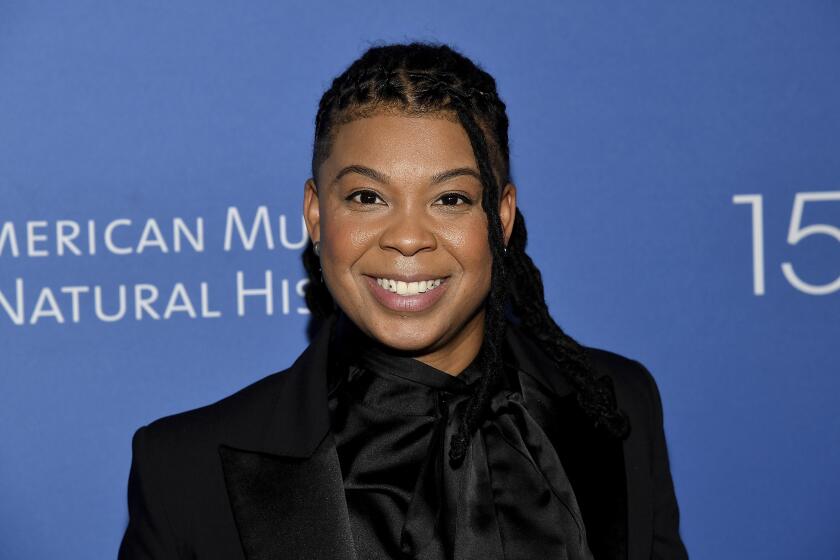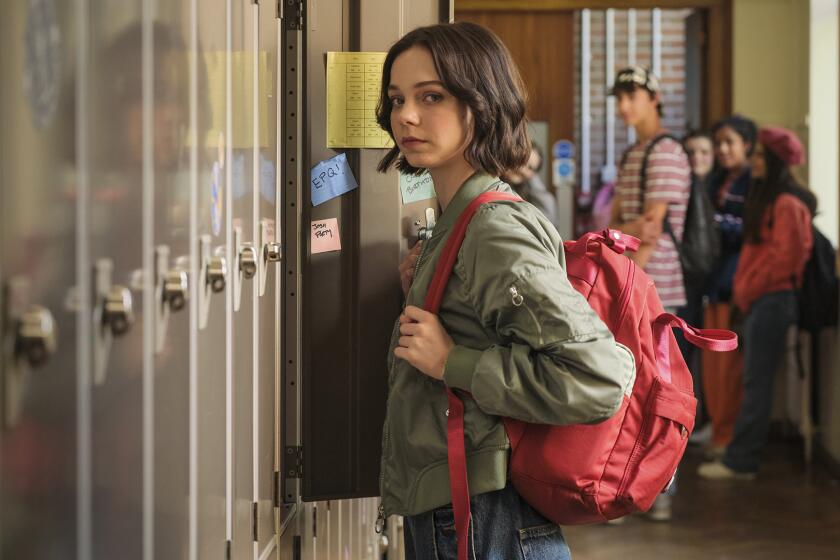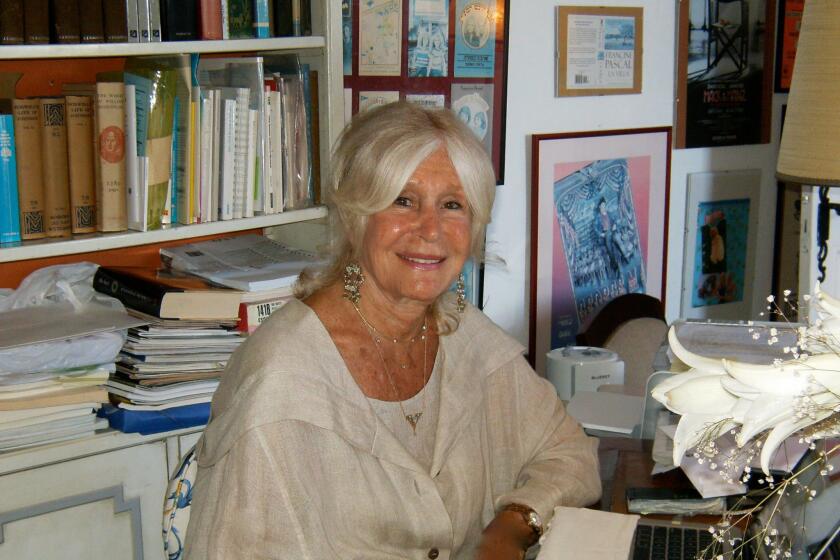‘Elizabeth Taylor: The Lost Tapes’ reveals an intimate portrait of an iconic Hollywood star

Why do I find Elizabeth Taylor so fascinating? My admiration for her work comes down, perhaps unusually, to the Zeffirelli-Shakespeare “The Taming of the Shrew” and the Nichols-Albee “Who’s Afraid of Virginia Woolf?,” two films in which she starred with then-husband Richard Burton. And I must have seen her in some of the “Father of the Bride” films — the original ones, with Spencer Tracy, not Steve Martin — when they came on television, because I’d watch nearly every comedy that came on television. But the adult dramas she made, like “Butterfield 8,” “Raintree County” and “A Place in the Sun,” were not so much my cup of tea then, and I’m not sure I’ve ever seen her breakout roles as a kid actor in “Lassie Come Home” and “National Velvet.”
And yet, like any American alive in the latter half of the 20th century, I was conscious of her much-photographed face, her blanket presence in the press, which ranged from respectable and respectful to tabloid and salacious. There were her many marriages — twice to Burton, most famously — her fabulous jewels, the hugeness of “Cleopatra,” the first film for which an actor was paid a million dollars, and whose cost overruns and commercial failure nearly bankrupted the studio. Andy Warhol painted her even before he got around to Marilyn Monroe. Later, there were commercials for her fragrance line and pioneering philanthropy in AIDS research.
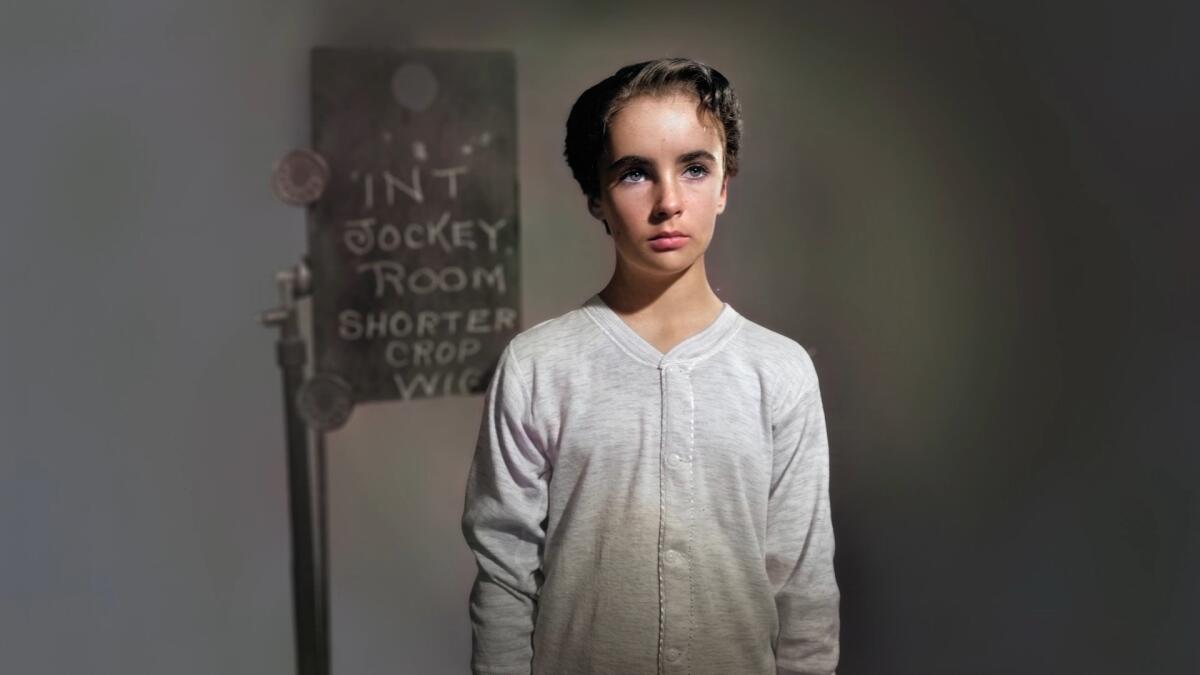
And so we come to “Elizabeth Taylor: The Lost Tapes,” an elegant little documentary by Nanette Burstein (“Hillary,” “The Kid Stays in the Picture”). Premiering Saturday at 8 p.m. on HBO and streaming on Max, it takes off from 40 hours of “newly discovered” interviews taped beginning in 1964 by journalist Richard Meryman for a potential book. Taylor was only 32, but had already been making movies for 22 years, and a star for 20. It’s her voice that drives the narrative, abetted in a small but significant way by those of close friends and associates, including Roddy McDowall, her “Lassie Come Home” co-star and lifelong confidant, and Debbie Reynolds, who became a less close friend after her husband, Eddie Fisher, suddenly became Taylor’s. A wealth of archival film and newsreel footage, home movies and snapshots — and, for context, new footage of tape recorders, ash trays and martini glasses — provide marvelous illustration of Taylor’s work and world.
There is, of course, our abiding interest in the private lives of public personalities — not necessarily the dirty laundry, though careers have been founded on digging it up and publishing it, but in getting a sense of the ordinary life of an extraordinary talent, of finding the human being in figures — I think I can use the word “iconic” here — who seem beyond knowing. Taylor’s early public persona was crafted by studio publicists, who sent her on sham dates simply to make her look like an ordinary teenager, but she was also one of the first celebrities for whom that narrative escaped control. Taylor was labeled a “homewrecker” after “stealing” Fisher from Reynolds — she married him, she says, because she could talk to him about his best friend, her late husband Mike Todd, who was killed in an air crash. But it was when she began an affair with Burton, while they were making “Cleopatra,” that paparazzi culture went into high gear.
Nowadays, under the scrutiny of 10,000 cellphones and the constant pressure to self-promote, celebrities are more likely to display a little dirty laundry themselves, to let you into their homes or sit for “revealing” interviews with interviewers whose celebrity equals their own. But they are revealing only within limits. Because these conversations were taped as deep background over many hours, and not an hour or two of talk to be immediately funneled into a magazine article, there’s a certain expansive, fly-on-the-wall informality to them, especially when McDowall is in the room and participating. One would like to have had something of this sort from Elvis Presley or Marilyn Monroe.
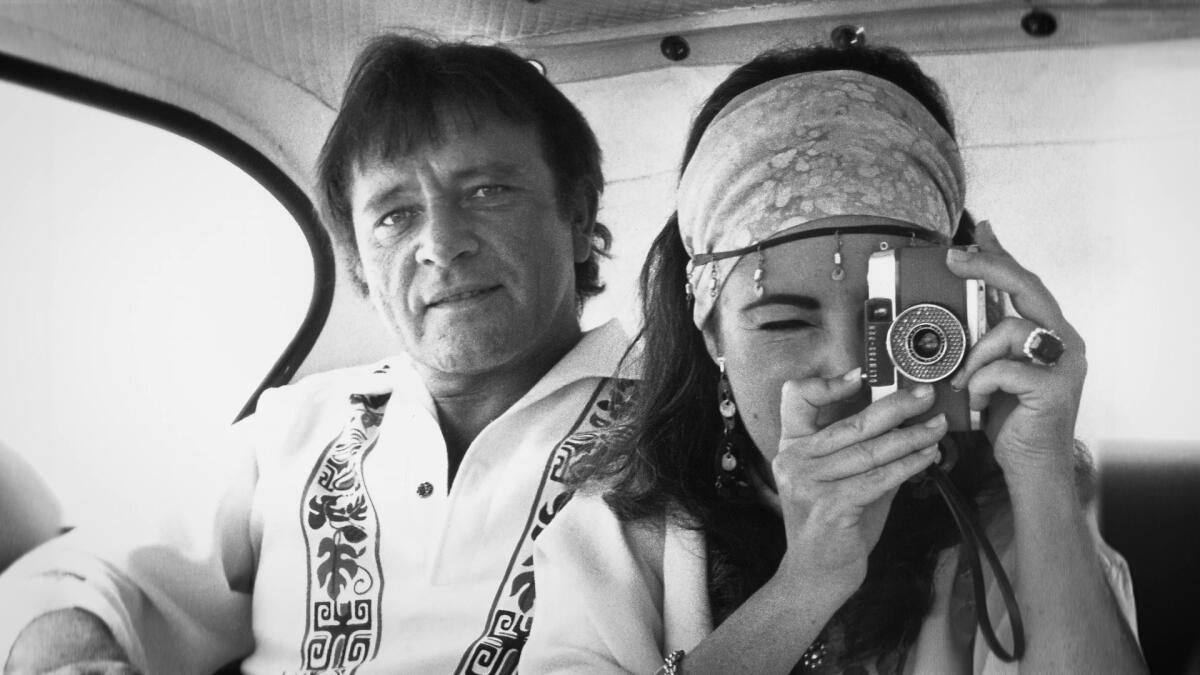
What is a revelation, watching thematically selected clips from her films — a small sampling of a filmography where the word “substantial” hardly does justice — is just how good an actor, and a reactor, she was. There is Burton’s remark — oft-repeated, by Burton — that when he first acted with her on set he thought she was no good, but when he saw the dailies he was amazed, and it’s true that she is wonderfully, intensely alive on film. If you’re not paying attention, it can be hard to see, through the capital-S Stardom and the distraction of her features — “It was truly like an eclipse of the sun — it blotted out everybody that was in the office,” says MGM producer Sam Marx, for whom a single glimpse was enough to cast her, without testing, in “Lassie Come Home” and the irresistible temptation to play to her looks: “She’s 5 foot 5 and 110 pounds of 16-year-old glorious, cover girl beauty,” as one early promotional clip describes her. And many of her films, it must be said, did not rise to her talent.
That tension between the public and the personal, between the dreck and the art, is the spine of the film. Taylor hated being “a public utility. I didn’t like fame, I don’t like the sense of belonging to the public; I like being an actress or trying to be an actress.” At the same time, she could be insecure about her acting, especially when paired with Method actors (and good friends) like Montgomery Clift and James Dean. Of her own method, she says, “It’s not technique, it’s instinct.” And yet whatever she did, worked.
This is neither a complete accounting of the career, nor a prodding journalistic deep dive — though Taylor herself can dive pretty deep. (She likes a man who can dominate her, we learn; she would annoy Todd simply so she could lose the ensuing argument.) All narrators are, to be sure, at least somewhat unreliable, both as regards historical facts and inner states, and “The Lost Tapes” is of course limited by the fact that the tapes run out in Taylor’s early thirties; the rest of the story, highly compressed, is carried on by others. But all in all, Burstein’s film feels big and perceptive, a love letter to a remarkable, interesting and very human human.
More to Read
The complete guide to home viewing
Get Screen Gab for everything about the TV shows and streaming movies everyone’s talking about.
You may occasionally receive promotional content from the Los Angeles Times.




